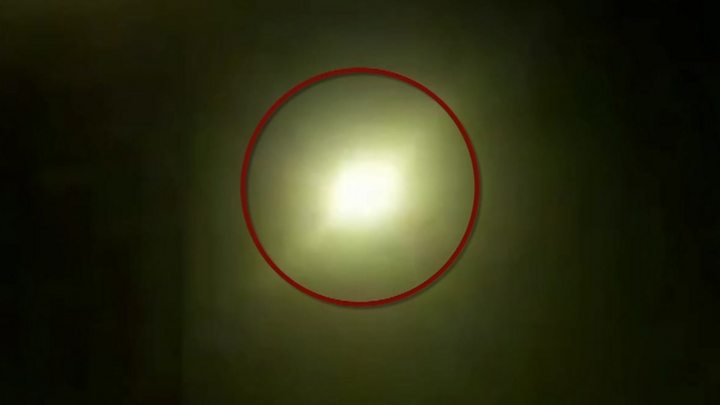
Media playback is unsupported on your device
Western countries say they have evidence that an Iranian missile shot down a Ukrainian plane close to Tehran airport on Wednesday.
Iran has denied any involvement, and say the plane was not hit by a missile.
So what’s the evidence that an Iranian missile was to blame?
What is the video evidence?
Video footage shared on Iranian social media accounts appears to show the moment of impact on Ukrainian International Airlines flight PS752.
The images show a flash followed by a loud bang. The plane then continues to fly, turning back in the direction of Tehran airport, then crashing into the ground in a ball of flame.
BBC Monitoring has indentified the location from where the video was shot to Parand, a residential area west of Tehran.
It’s about 30km (18miles) from Imam Khomeini International Airport, where the aircraft began its journey.
Rows of housing blocks, a construction site and a storage tank, which all appear in the video, match a Google Earth image of the location, according to BBC Monitoring.
Are there clues in the photos?
There are now many photos of the plane wreckage available on media sites.
These photos, and the subsequent detailed examination of the wreckage itself, will hold vital clues such as burn marks indicating a fire, explosive residue which could point to a bomb on board or possible shrapnel damage from a missile.
An anti-aircraft missile is generally designed to detonate at a distance from the target, sending shrapnel towards it, inflicting maximum damage.
Puncture holes pointing inwards could indicate an explosion or damage from outside the aircraft.
And detailed analysis of the size and shape of any holes could give an indication of the type of missile used.
At this stage, it’s difficult to verify many of the images which are being shared which – it’s claimed – show damage consistent with a missile attack.
Some show the nose of a missile from the Russian-made Tor missile system.
These photos have not been independently verified yet and we don’t know where or when they were taken, because there are no identifiable landmarks.
US intelligence sources say two missiles were fired, according to US media.
Questions have been raised about why the nose of the missile in these photos appears to be intact.
However, an expert we’ve spoken to explains that it’s not surprising to see the nose – which contains its guidance system and does not itself impact the target – intact and at a distance from the crash site.
There are reports from inside Iran that the crash site has already been bulldozed and the wreckage cleared away. Elizabeth Palmer of CBS news reported that “virtually all pieces” of the plane had been removed by Thursday.
This makes the digital evidence gathered so far a vital element in determining what actually happened to the aircraft.
What about other evidence?
There are two so-called “black boxes”.
The flight data recorder captures everything going on with the plane’s systems. This will be crucial in revealing if there were any internal malfunctions.
The voice recorder is designed to contain two hours of audio from the cockpit, and may hold vital clues, as it records what the flight crew were saying at the time.
Iranian officials say it could take up to two months to download data from the black boxes.
It takes a long time to investigate because there’s a huge amount of data, says aviation expert Julian Bray. However, he also says that skilled analysts may be able to get an initial idea from the data within a couple of weeks.
There’s a limit to what the black boxes can reveal if a bomb or missile destroys the aircraft. They could simply stop working, although the voice recorder might pick up a sound wave just beforehand.
Some investigations can last years. A probe into the crash of an Ethiopian plane off Beirut in 2010 took two years to complete, even though the black boxes were sent to France, which has some of the world’s top investigators.
How could it have happened?
The Iranian military would have been on very high alert just hours after the launch of Iranian missiles at US targets in Iraq, in anticipation of possible retaliatory strikes by the US.
The area where the plane came down was not only close to the capital, Tehran, but also a military base of the Iran’s Revolutionary Guards.
There are however multiple precautions that should have been in place to prevent a civilian airliner being targeted in error.
The radar system used by the missile operators is designed to pick up identifying signals from all civilian aircraft.
“Flight PS752 was transmitting a transponder code showing its civilian identity registration, position and altitude,” says Justin Bronk, a Research Fellow at the Royal United Services Institute, “and the missile radar operator should have been able to see that information.”
If this does prove to be a missile strike on a passenger plane, it would not be unprecedented.
In 2014, a Russian-made missile hit a Malaysian civilian airliner over Ukraine, killing 298 people.
An Iranian aircraft was shot down in error in 1988 by a US navy warship, the USS Vincennes, killing 290 people.
In 1983, a Soviet fighter jet took down a Korean passenger plane after it strayed into Soviet airspace. All 269 people on board died.
Click Here to Visit Orignal Source of Article https://www.bbc.co.uk/news/world-51060859

